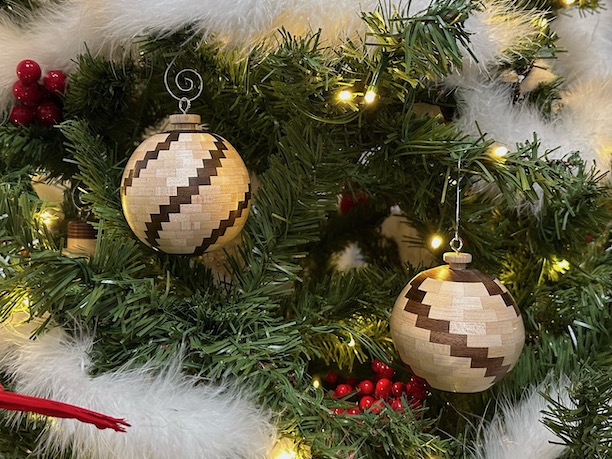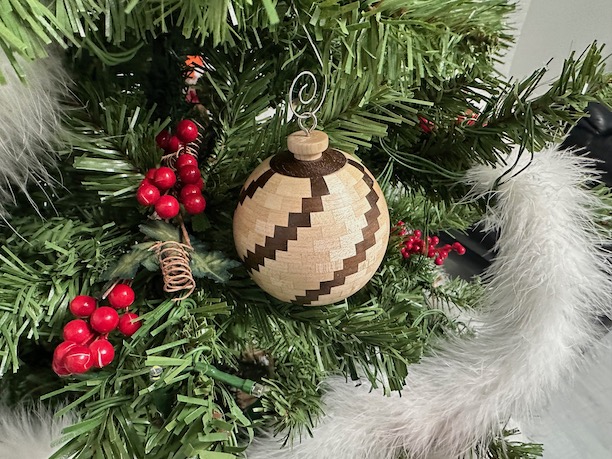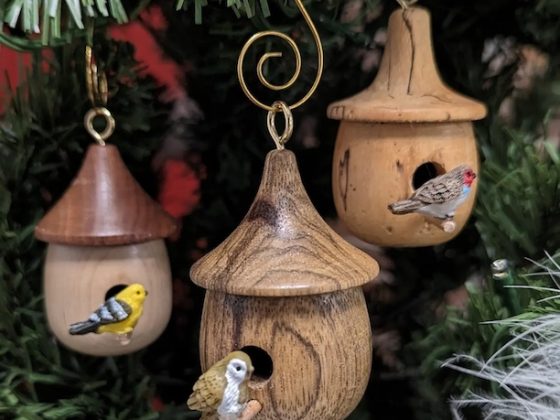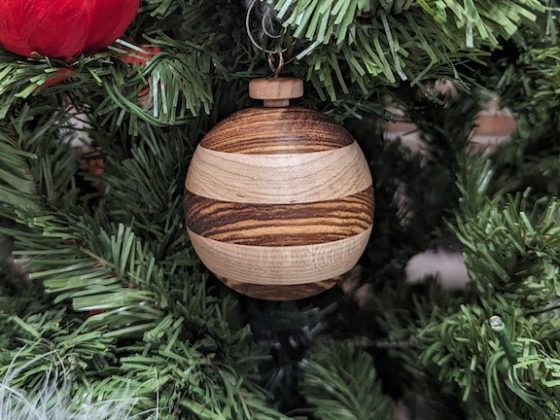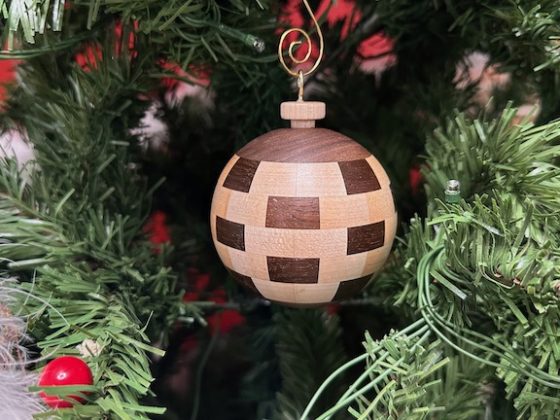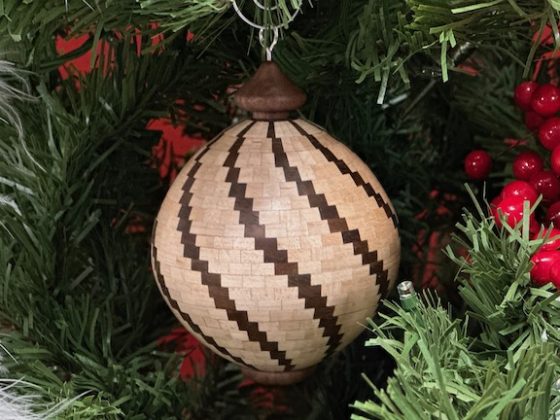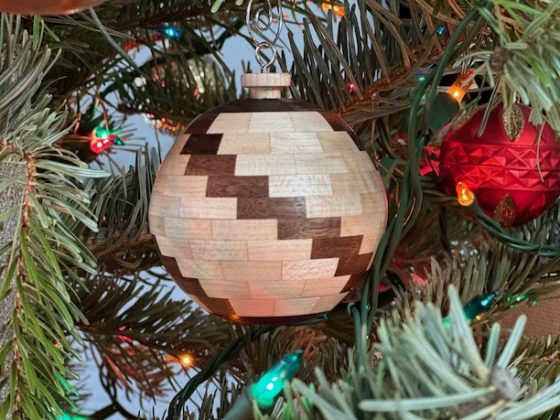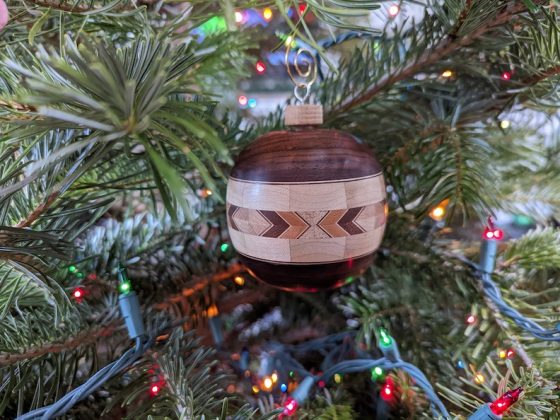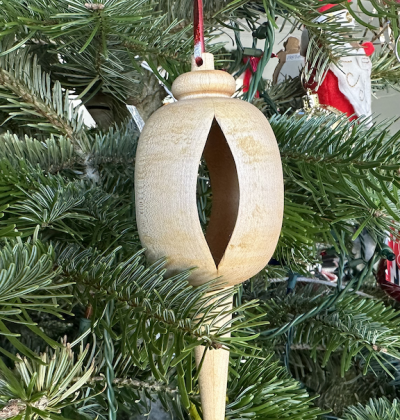The Swirl 283 ornament uses the concepts I learned from making The Swirl 123 and takes them up a notch. The Swirl 283 is made of 283 segments.
Before beginning the work I determined the correct diameter and segment size for each row. I did this by drawing out the shape I was going to make and determining the size of each segment face and ring diameter. See Figure 1 for the diagram. I used Larry Marley’s segment calculator for the actual calculations. More on that below.
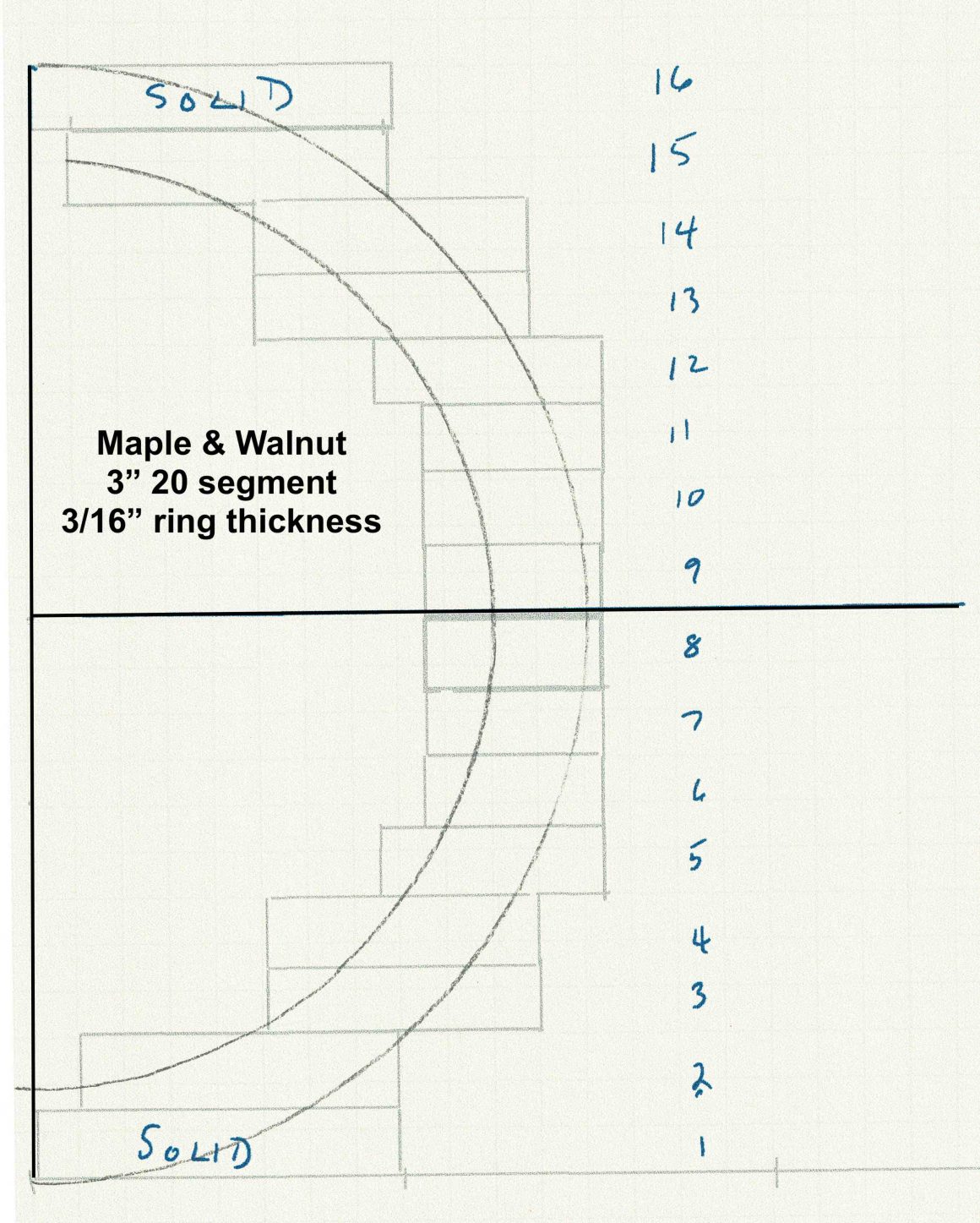
The details for each row are shown in Table 1. There are a few definitions that you need to understand in order to use the data in the table.
Segment Thickness = This is the thickness of each segment; thus, the thickness of the ring.
Segment Width = This is the width of the strip of wood from which you will be cutting the segments.
SEL = The SEL is the length of the front of the segment (also referred to as Segment Length.)

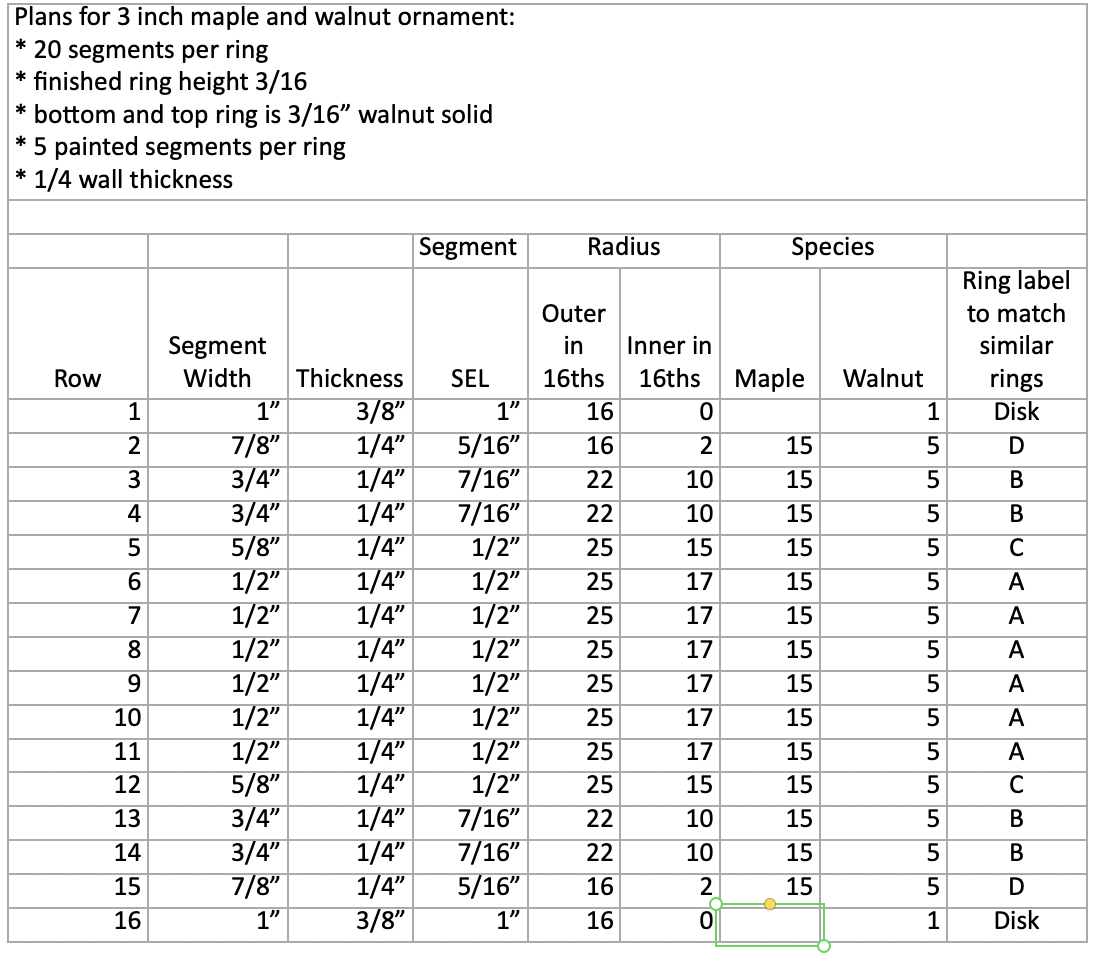
Before I started cutting segments I prepared the necessary strips of wood. Then I began cutting the strips using my Marken wedgie sled and my homemade ramp. The ramp is fastened to the table saw using magnets and aids in moving the segments away from the blade as they are cut. (See the article Using a wedgie sled for more details)
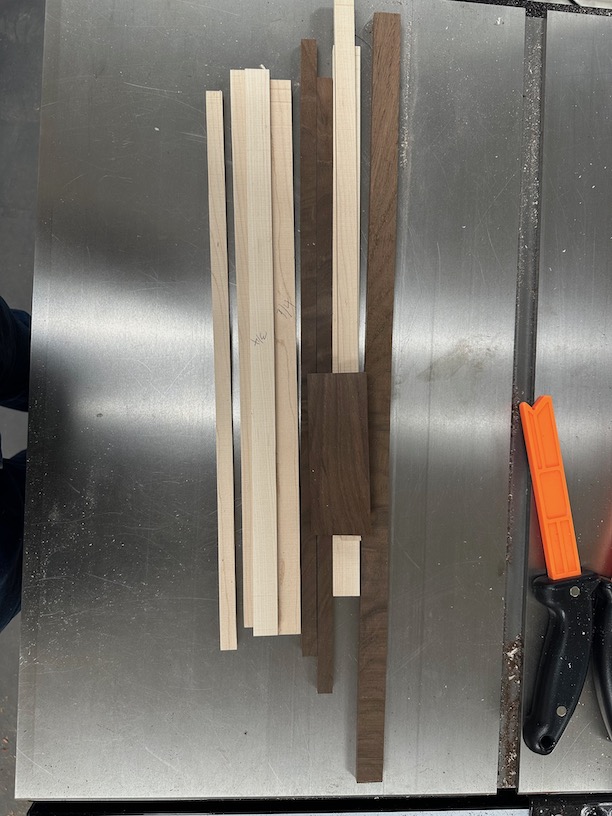
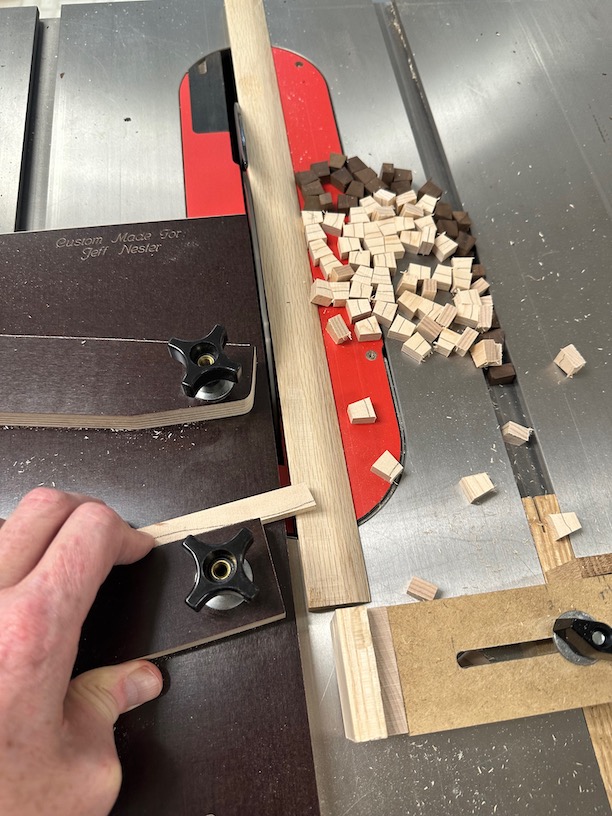
To set up my stop block I used my iGaging Setup Blocks and placed them between the blade and the stop block. When adjusting the stop block, I made sure not to apply excessive pressure that might bend the blade. Once the distance was set, I moved the stop block back toward the front of the saw and placed my ramp back into position.
NOTE:
Setting the distance to the SEL is incorrect but insignificant for these size pieces. See How to Use a Wedgie Sled for more details.
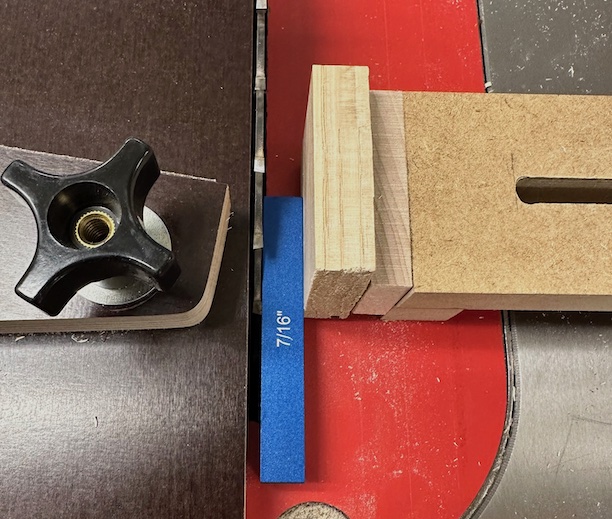
I learned a cool trick to glue up these small pieces from Jason Swanson (the Peppermill guy.) I have an entire article devoted to this technique, but I’ll go over it briefly here. To glue your segments together, take a strip of tape and lay it out on a smooth work area. Tape both ends down so that it stays flat and tight. Now, place the segments one at a time, side by side, on one edge of the tape.
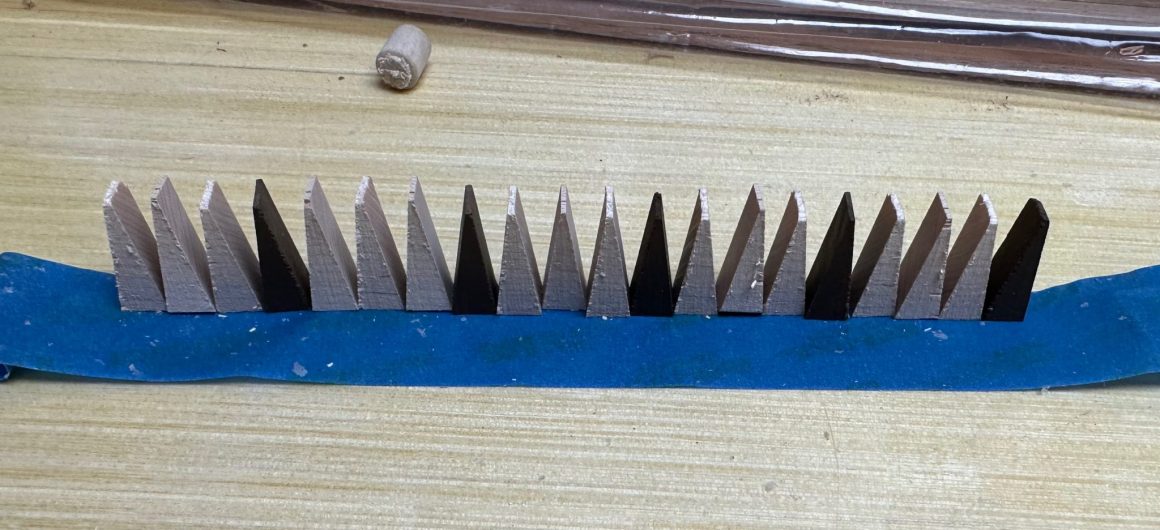
Place a small bead of glue at the bottom of each “V” (as shown in Figure 6.) You’ll also need a small bead on the outside of the last segment. When you clamp the pieces together with a hose clamp the pressure will force the glue all the way up to the thin part of the segment, making it unnecessary to apply glue to the entire surface. (For more details on my gluing technique, read my Segment Glueing Technique article).
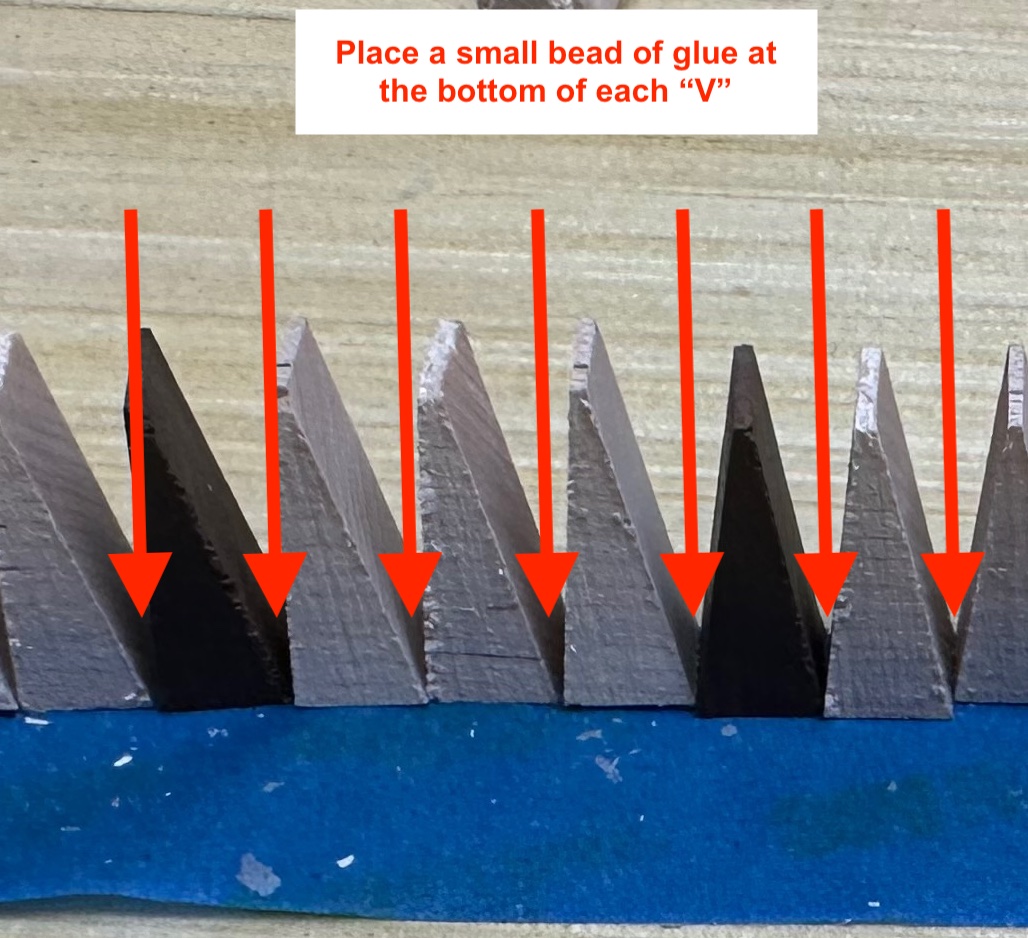
This ornament has 14 segmented rings, plus a solid walnut ring on both ends, making a total of 16 rings. Once all the rings dried, I ran them through the thickness sander. The thickness sander does a couple of things:
- It makes both sides of the ring flat and parallel with one another.
- It makes all the rings the exact same size. For this ornament, they need to be 3/16″ thick.
It’s worth noting that because I always sand my glued rings, I generally add 1/16 to 1/8 of an inch of height when I initially cut them so that I will have a little wiggle room when sanding.
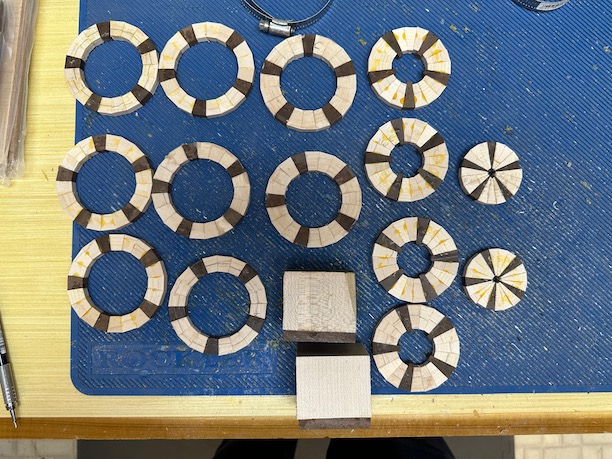
When sanding, because of the small size of the rings, I make sure that the pieces are touching each other so the last one will force the one before it through. I chase the last ring with a sacrificial wood strip.
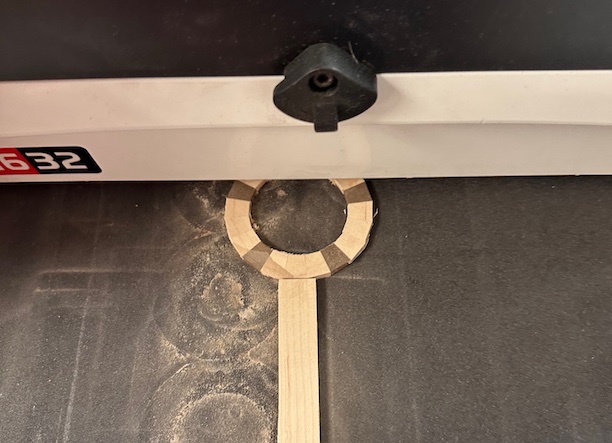
The end blocks are made up of scrap wood glued to the solid walnut disks that will become the bottom and top rings. Once the glue was dried, I turned a tenon on one end and then flattened the walnut face to prepare it for the first segmented ring.
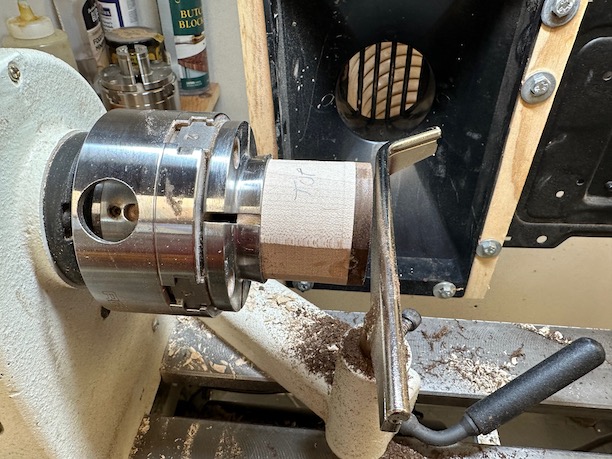
To ensure that the 2nd and 3rd rings were properly centered, I found it easier to put these very different-sized rings together on a flat surface. This way, it was easy to see the proper alignment. When putting the segmented rings together, I had to make sure to rotate each ring so that the walnut segment was halfway through the walnut segment on the previous ring. (This is the secret to getting the “Swirl” effect in the ornament.) I glued up 7 segmented rings to the solid walnut disk, then stopped. This gave me the top half of the ornament.
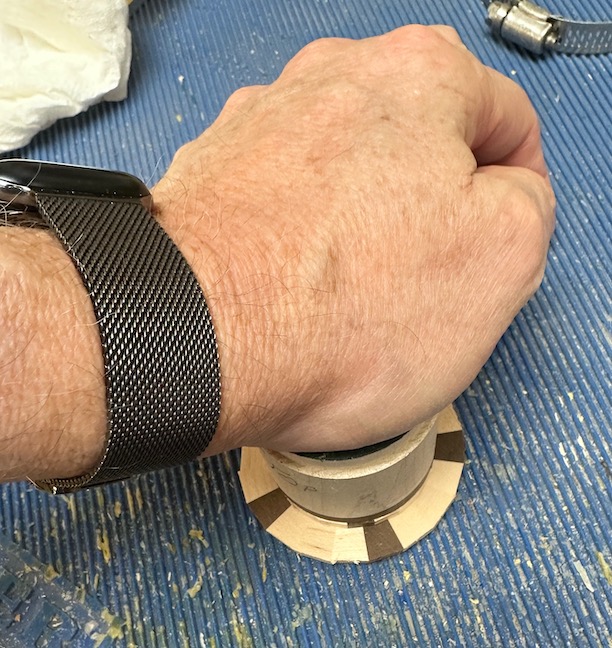
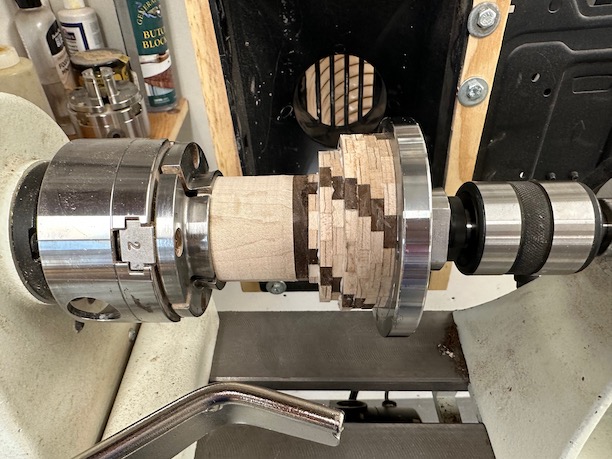
I repeated the steps described above for the bottom half of the ornament and let both sections dry for a few hours. (Be careful to make sure you continue the pattern correctly – it’s easy to get confused.) Then I mounted the top half to the lathe using the chuck and forced the bottom half against the top half using the tail stock. The pressure was sufficient to hold the two halves together while the outside shape was being turned. (Note the 2 halves are not glued together at this point.)
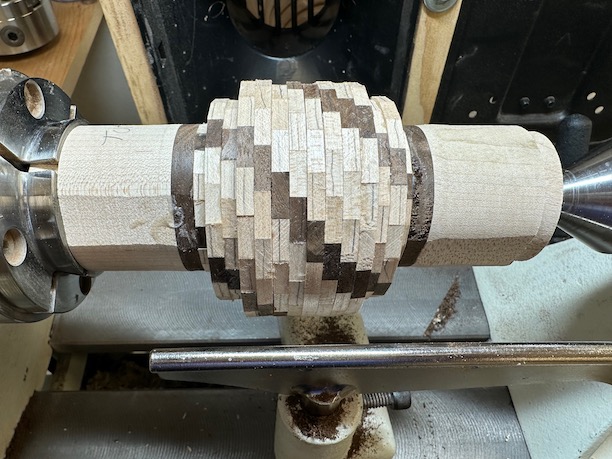

Once the outside shape was approximately 90% completed, I separated the two halves and hollowed out their insides to reduce the weight. Since the inside of the completed ornament will never be seen, it didn’t have to be pretty.
After hollowing out the halves, I drilled a 3/8″ hole through the top half. This hole will be used to insert the topper which will hold an eyelet for the ornament hook.
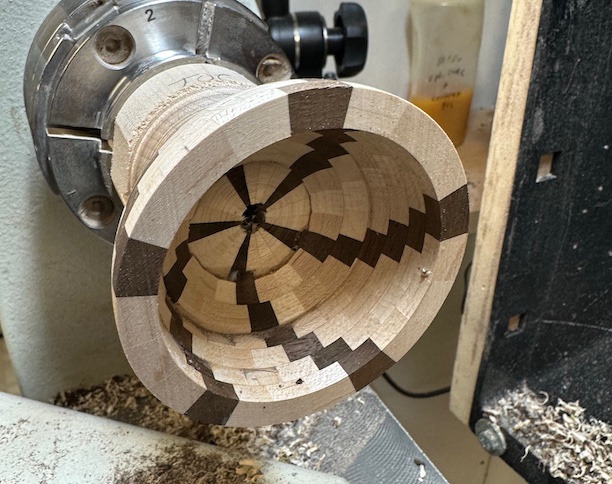
Next, I glued the two halves together, again using the lathe as a clamp.
After the glue dried, I finished turning the outside shape and then turned the topper. I used a 1/16″ drill bit to put a small hole in the topper to accept an eyelet.
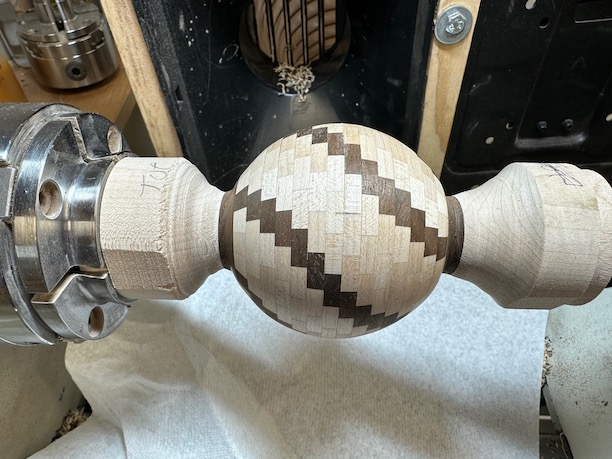
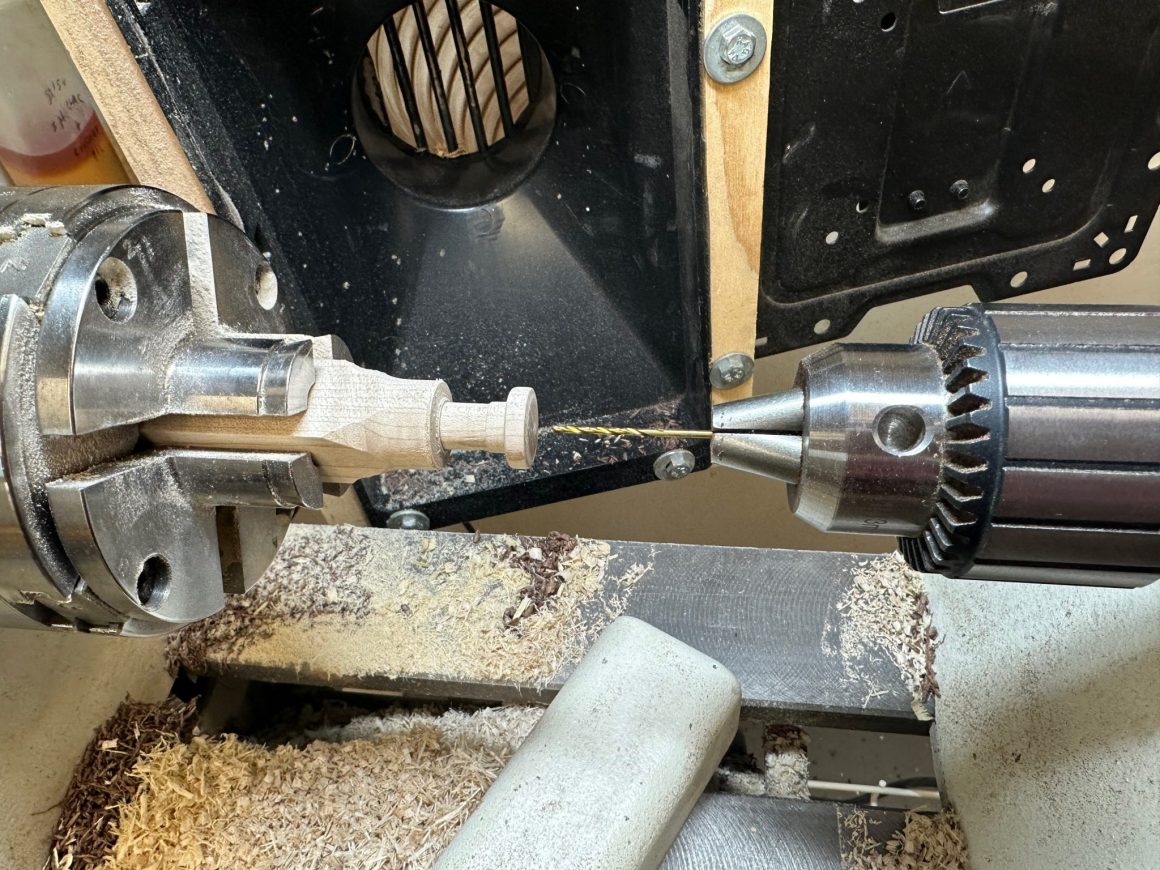
I inserted and glued the topper into the 3/8″ hole that I had drilled earlier, then threaded a small eyelet into the 1/16″ hole to make the ornament ready for hanging on the tree.
While making this ornament, I learned that working with more segments per ring is not really more difficult, it is just more time-consuming. I like the finished look of this ornament much better than the Swirl 123.
